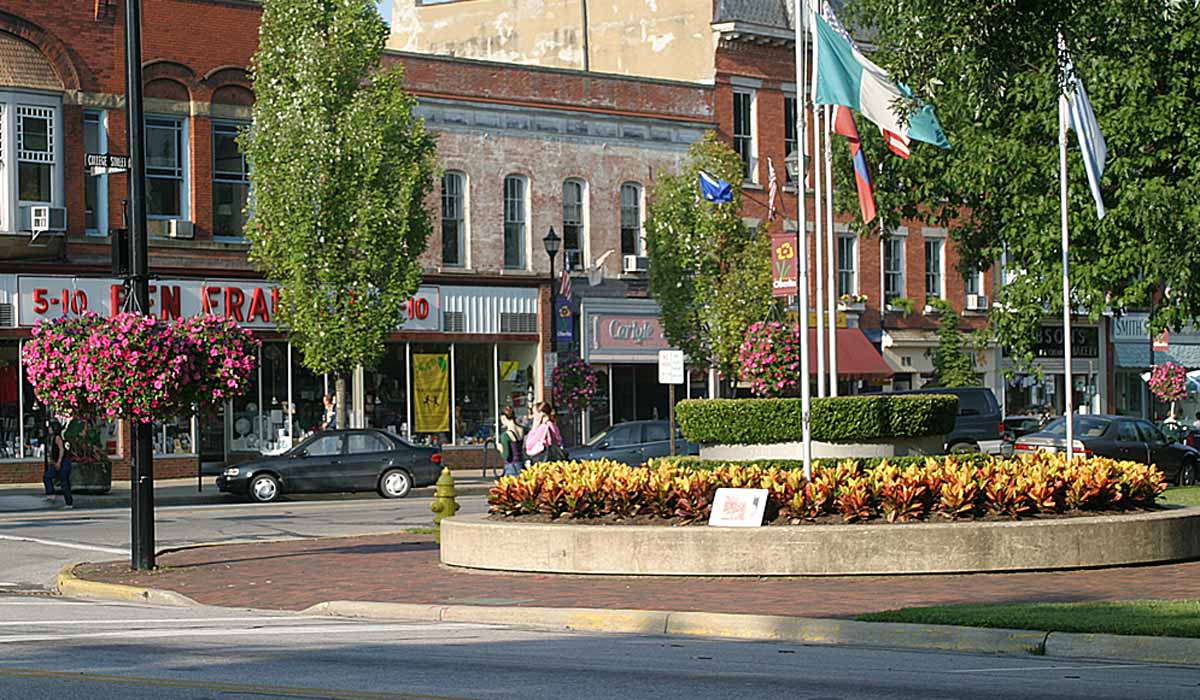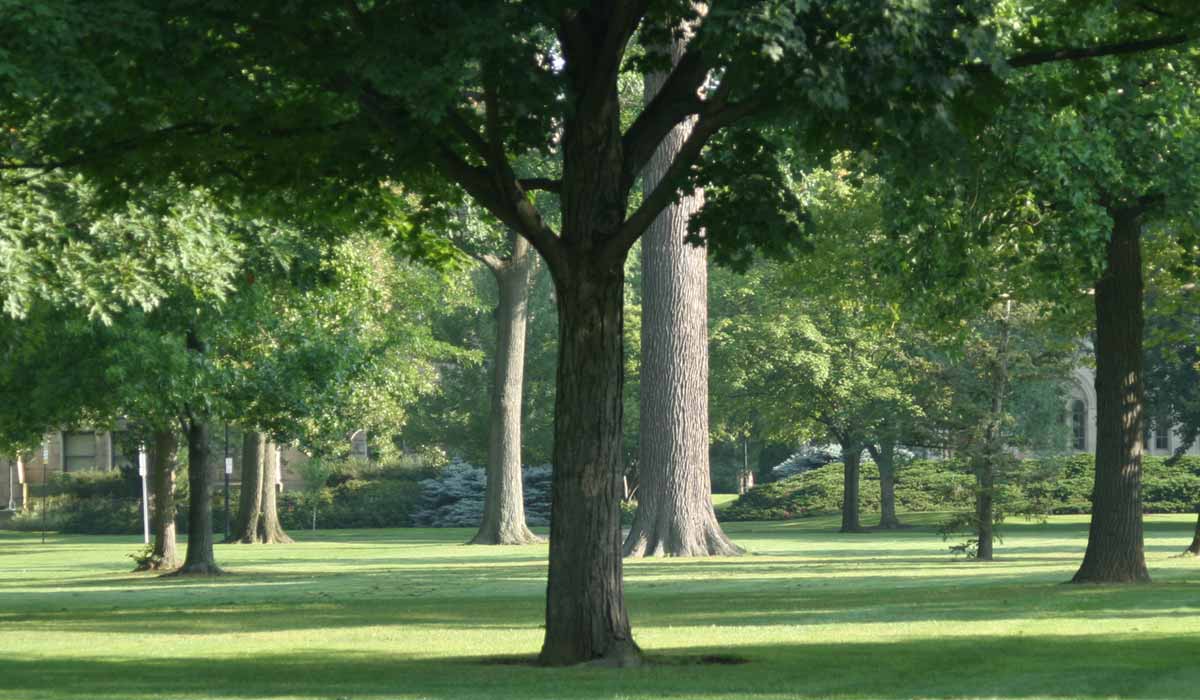What is the Best Way to Reforest?
- Hits: 4950
- 0 Comments
- Subscribe to updates
- Bookmark
Written by Machmud Machmudov, edited by Tani Colbert-Sangree
 A White Oak SaplingOn October 26th, the Carbon Management Fund implemented its first project of the '13-'14 school year, taking another step towards carbon neutrality for Oberlin College, but with a new, innovative approach to tree planting. The College Grounds Crew, with assistance from student volunteers, planted 8 red oak trees and 8 white oak trees across 18 acres of formerly agricultural fields next to the north campus intramural and club sports fields and north of the 2.27 megawatt solar array. The trees were funded by a grant from the Green EDGE Fund and are part of a larger plan to naturally return this land to forest.
A White Oak SaplingOn October 26th, the Carbon Management Fund implemented its first project of the '13-'14 school year, taking another step towards carbon neutrality for Oberlin College, but with a new, innovative approach to tree planting. The College Grounds Crew, with assistance from student volunteers, planted 8 red oak trees and 8 white oak trees across 18 acres of formerly agricultural fields next to the north campus intramural and club sports fields and north of the 2.27 megawatt solar array. The trees were funded by a grant from the Green EDGE Fund and are part of a larger plan to naturally return this land to forest.
The project followed a similar tree-planting event, in which 100 trees were planted on April 27th, 2013 in a concentrated 1-2 acre area adjacent to the fields planted with 16 oak trees. Both the fall and spring plantings aimed to reforest the former agricultural fields, but the more recent fall planting will accomplish this afforestation in a more natural and cost-effective manner. Instead of planting 100 trees in the space of about an acre, completely transforming a section of field as had been done in April, this time we would let the majority of the work be done by nature.
Walking through these fields you can notice small trees have started to pop up, these are the product of seeds blown into these fields from the adjacent forest. Our October 26th planting is supplemental to that natural ongoing process of succession as seeds fly in and begin to grow. Our addition of white and red oak, will increase the biodiversity of the new forest as these species would not otherwise find themselves in the open fields due to the weight of their seed. Squirrels, as quintessential acorn lovers, hoarders and buriers, are the primary method for oak seed transportation when they forget the location of a nutty morsel. However, open fields pose a big threat to squirrels and reduce the likelihood of this method for seed transport. Birds of prey would like nothing better than to see a bushy tail high in the air as the unsuspecting squirrel searched for or buried its nuts out in the open. Squirrels will not take the risk of traversing the open field, and for our purposes cannot be relied upon to add those heavier nut species to the area until cover is provided 10-15 years down the road. By planting oak trees and placing them in the middle of these fields we are ensuring the existence of species that natural processes would not otherwise include in the early stages of forest growth, creating a more bio-diverse and resilient forest long-term.
 Pictured: April 2013 planting and adjacent forest.
Pictured: April 2013 planting and adjacent forest.
In past tree plantings, The Carbon Management Fund has touted the number of tons of carbon sequestered by the individual trees planted, 26 trees planted in Tappan Square will sequester ~183 tons of CO2 over their lifetime, but this project has changed the focus to more fully account for the carbon accumulated by an area of forest in total. The forest adjacent to the former agricultural fields was the site of a recent study by Claire Hoffman ???15, Annika Nelson ???15 and Griff Radulski ???14, students in John Petersen's Systems Ecology class. These students measured the 45-acre forest???s current carbon stock to ~4,450 metric tons of carbon, the equivalent of ~16,317 metric tons of CO2 removed from the atmosphere. The forest area studied by Hoffman, Nelson and Radulski is estimated at 55 years old and accumulation rates are increasing each year. Allowing these additional 18 acres to naturally become forested will sequester carbon similar to the adjacent forest over its lifetime. If this new section of forest performs similar to that of the adjacent forest, in 55 years these 18 acres will have sequestered and removed 6,527 metric tons of CO2 from the atmosphere. Comparing how our concentrated tree planting from April 2013 accumulates carbon, to our more recent October 2013 tree planting will be the subject of future research to inform afforestation (the process allowing land to become forest) efforts in Oberlin and beyond.
This project represents one of many efforts being taken around the world to reforest land. The Carbon Management Fund is proud to support and will continue to push for similar efforts to make Oberlin carbon neutral by 2025, while striving to be a model for similar communities around the world.










Leave your comment